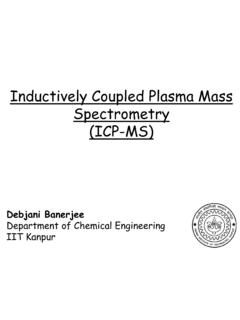Transcription of C.V. Raman Global University, Bhubaneswar
1 Raman Global University-Odisha Bhubaneswar - 752054 1 | P a g e Department of Electronics and Communication Engineering Subject: Introduction to Electronics Engineering (IEE) Regulation Year: 2020-2021 Course Code: ECE1001 Credit: 3 Course Category: Engineering Science (ESC) Contact hours: 42 Recommended Prerequisites: Course Outcomes :After successful completion of the course, the student will be able to CO1 Design simple logic circuits by using the concept of number systems, logic gates, numeric codes, and Boolean algebra minimization CO2 Apply the concept of working principle of diode(s)
2 In the Rectifiers, Clippers, Clampers, Voltage Regulator, and LED circuits CO3 Analyze simple amplifier circuits using the concept of BJT, JFET, and its Biasing CO4 Apply the concept of OP-AMP, and its characteristics in inverting, non-inverting, summing, and subtractor circuits CO5 Understand the operations of CRO/DSO, multi-meter, Function Generator in measurement, and generation of different signals. Course Details Unit 1 Number System and Logic Gates ( 10 Hrs) Basics of Number System, its Conversion, Compliments, and mathematical Operations, Boolean algebra, Basic Logic gates.
3 Unit 2 Semiconductor Diode and its Applications (11 Hrs) PN junction diode Operation, and characteristics, Diode applications: rectifiers, clamper, clipper, Voltage regulator, LED, Schottky diodes Unit 3 Bipolar Junction transistor (07 Hrs) Bipolar Junction Transistor: Construction, Operation and characteristics, transistor biasing circuits, and stabilization analysis Unit 4 Field Effect Transistor (05 Hrs) Construction and principle of working of JFET, Drain / Transfer characteristics, Biasing of JFET Unit 5 Operational Amplifier and Instruments (09 Hrs) Raman Global University-Odisha Bhubaneswar - 752054 2 | P a g e Operational Amplifier and its various applications.
4 Electronic Instruments: Digital Multi-meter, CRO, Spectrum analyzer, DSO. Text Books: T1. Electronic Devices and Circuit Theory , Robert L. Boylestad and Louis Nashelsky, Pearson Education, 11th Edition, 2013. T2. Microelectronics Circuit Adel S. Sedra and Kenneth C. Smith, Oxford University Press, 6th Edition, 2013. T3. Digital Fundamentals , Thomas L. Floyd, Pearson Education, 11thEdition, 2015. Reference Books: R1. Integrated Electronics: Analog and Digital Circuit , Jacob Millman, Christos Halkias and Chetan D Parikh, Mcgraw Hill Education, 2nd Edition, 2011.
5 R2. Digital Design , M Moris Mano, Michael D. Ciletti, Pearson Education, 4th Edition, 2011. R3 Principles of Electronics , V K Mehta, S. Chand & Company, New Delhi, 12th Edition Open Sources OS1. COURSERA - Introduction to Electronics - Dr. Bonnie H. Ferri, and Robinson, School of Electrical and Computer Engineering, Georgia Institute of Technology OS2. NPTEL - Basic Electronics - Video course - Prof. Chitralekha Mahanta, Department of Electronics and Communication Engineering, IIT Guwahati # OS3. NPTEL Digital Circuits - Video course - PROF.
6 Santanu Chattopadhyay, Department of Electrical Engineering, IIT Kharagpur Raman Global University-Odisha Bhubaneswar - 752054 3 | P a g e Department: Chemistry Subject: Engineering Chemistry Regulation Year: 2020-21 Course Code: CHY1001 Credit: 3 Course Category: Basic Science (BSC) Contact hours: 42 Recommended Pre-requisite: NIL COURSE OUTCOMES: CO1: Determine the stability, bond order and magnetic property of diatomic molecules including O2, N2, H F and understand the coordination complexes CO2: Calculate phases, components and degree of freedom in single and bi-component system using phase diagram.
7 Calculate density, cell parameters, molecular mass of metals and metal oxides CO3: Calculate enthalpy, heat of combustion, entropy based on Hess s law and Born Haber s cycle CO4: Understand the application of laws of UV-Visible and IR spectroscopy in analytical Chemistry CO5: Calculate the EMF of electrochemical cell, establish the relationship of EMF with various thermodynamic parameters, and determine the pH through EMF measurement Course Details: Unit 1: Structure and Bonding Schr dinger equation, interpretation of wave functions, molecular orbital theory of diatomic molecules, nomenclature and isomerism in coordination complex.
8 Crystal field theory and the energy level diagrams for transition metal ions and their magnetic properties Unit 2: Phase rule and Solid State Phase diagram of one & two component systems, H2O, S and Bi- Cd systems. Crystal systems, Bravais lattices, ionic solids, and crystal defects including Schottky and Frenkel defects Unit 3: Thermodynamics Thermo chemistry, thermo-chemical calculations based on Hess s law and Born-Haber cycle, second law of thermodynamics, entropy, the free energy concepts, applications to gases, Gibbs Helmholtz equation, free energy change and criterion of spontaneity and Maxwell s relations.
9 Raman Global University-Odisha Bhubaneswar - 752054 4 | P a g e Unit 4: Spectroscopy Lambert Beer s Law, Principles and applications of UV-Visible Molecular Absorption Spectroscopy; Chromophores, Applications on quantitative analysis. Absorption by aromatic systems Unit 5: Electrochemistry Electrochemical cells, EMF, Measurement of EMF, Relation between EMF & free energy change of cell reactions, Electrode potentials and measurements with reference to standard hydrogen electrode, calomel electrodes, determination of pH, dry cells, storage cells and fuel cells Text Books (minimum 3): T1.
10 Engineering Chemistry , P. C. Jain and M. Jain, Dhanpat Rai publishing company (P) Ltd. New Delhi, 16th Edition, 2013. T2. Physical Chemistry Barrow, Tata Mc-Graw Hill Edition, New Delhi, 5th Edition, 1992. T3. Fundamental of Molecular Spectroscopy , Banwell and McCash, Tata McGraw-Hill Education, 4th Edition, 1994. Reference Books (minimum 2) R1. Selected topics in Inorganic Chemistry Malik, Tuli and Madan, S. Chand & Company Ltd, New Delhi, 17th Edition, 1976. R2. Principle of Physical Chemistry , Puri, Sharma, Pathania, Vishal Publishing Co.

